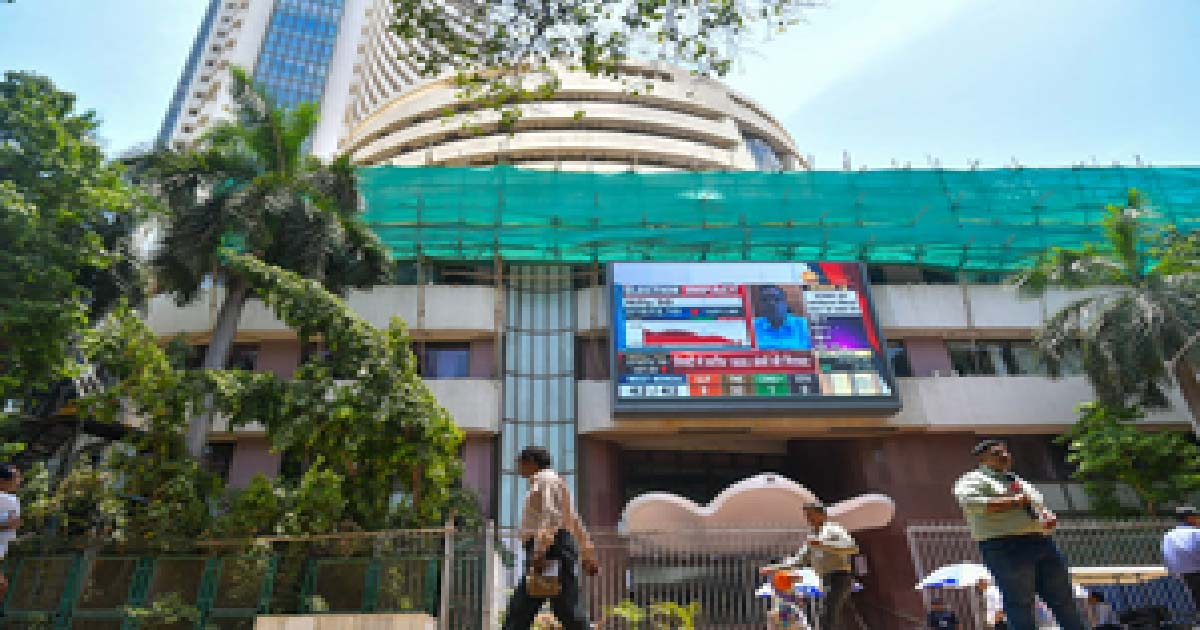Business
Centre notifies new rules providing easier access to electricity transmission network
Power Ministry has promulgated the Electricity (Transmission System Planning, Development and Recovery of Inter-State Transmission Charges) Rules 2021. This paves the way for overhauling of transmission system planning, towards giving power sector utilities easier access to the electricity transmission network across the country.
At present, generating companies apply for long-term access (LTA) based on their supply tie-ups, while medium-term and short-term transmission access is acquired within the available margins. Based on LTA application, incremental transmission capacity is added. A number of sector developments, such as the increasing focus on renewable energy, and the development of the market mechanism, necessitated a review of the existing transmission planning framework based on LTA.
The rules underpin a system of transmission access which is termed as a General Network Access (GNA) in the inter-state transmission system. This provides flexibility to the States as well as the generating stations to acquire, hold and transfer transmission capacity as per their requirements.
In a major change from the present system of taking transmission access, power plants will not have to specify their target beneficiaries. The rules will also empower state power distribution and transmission companies to determine their transmission requirements and build them. Also, states will be able to purchase electricity from short term and medium term contracts and optimise their power purchase costs.
Apart from introducing GNA, the rules also specify clear roles of various agencies involved in the transmission planning process. The Central Electricity Authority shall prepare a short-term plan every year on rolling basis for next 5 years and prospective plan every alternate year on rolling basis for next 10 years. The Central Transmission Utility shall prepare an implementation plan for inter-State transmission system every year on a rolling basis for up to next 5 years which will take into account aspects such as right -of-way and progress of the generation and demand in various parts of the country.
The rules specify how the existing LTA would be transitioned into General Network Access. The rules also outline the recovery of GNA charges from the users of the transmission network and assign the responsibility of billing, collection and disbursement of inter state transmission charges to the Central Transmission Utility.
The rules have enabled, for the first time, that the transmission capacity can be sold, shared or purchased by the States and generators. The rules prescribe that excess drawal or injection over the GNA capacity sanctioned shall be charged at rates which are at least 25 per cent higher and this will ensure that the entities do not under-declare their GNA capacity. The Central Electricity Regulatory Commission (CERC) has been empowered to bring out detailed regulations on GNA in inter state transmission systems.
The Central government has notified these rules with a view to streamline the process of planning, development and recovery of investment in the transmission system. The rules are aimed at encouraging investments in the generation and transmission sectors. The rules will enable the country to develop deeper markets.
Transmission system is the vital linkage in the power sector value chain connecting the generation and the demand. The Central government is committed towards ensuring adequacy of transmission system for the supply of power from one State to another State and across regions. The rules brought out by the Central government underpin that “electricity transmission planning shall be made in such way that the lack of availability of the transmission system does not act as a brake on the growth of different regions and the transmission system shall, as far as possible, to be planned and developed matching with growth of generation and load and while doing the planning, care shall be taken that there is no wasteful investment”.
In a series of other reforms carried out earlier, the Ministry had separated the Central Transmission Utility from POWERGRID to provide transparency and a level playing field in the bids for transmission and reduced the lock-in period for transmission projects in order to attract investments and more competition. The Ministry of Power also issued the Right of Consumer rules, which empower consumers and rules laying down the ceiling for late payment surcharge.
Business
Gold prices slide 1 pc on MCX as Fed Rate cut hopes fade

Mumbai, Nov 24: Gold prices fell sharply on Monday as weak chances of a US Federal Reserve rate cut and easing geopolitical tensions weighed on investor sentiment.
A stronger US dollar also added pressure on the precious metal.
On the Multi Commodity Exchange (MCX), gold December futures dropped 1 per cent to Rs 1,22,950 per 10 grams.
Silver followed the trend, with December futures falling 0.61 per cent to Rs 1,53,209 per kg in early trade.
“In INR gold has support at Rs1,23,450-1,22,480 while resistance at Rs1,24,750-1,25,500,” analysts said.
“Silver has support at Rs1,53,050-1,52,350 while resistance at Rs1,55,140, 1,55,980,” they added.
Analysts said gold currently lacks any strong positive trigger to maintain its previous gains.
The latest US job market data reduced expectations of a 25-basis-point rate cut by the Federal Reserve in December, which has been a key reason behind the correction in prices.
The strong economic data pushed the US dollar index to nearly a six-month high on Friday.
The index remained above the 100 level on Monday, making gold more expensive for buyers holding other currencies and restricting demand.
Geopolitical concerns have also eased in recent days, further reducing gold’s safe-haven appeal.
Experts believe the combination of a stronger dollar, uncertainty over US tariff decisions, developments in the Russia-Ukraine conflict, and the upcoming Fed policy announcement may keep gold prices volatile in the near term.
Some market analysts expect further correction and advise investors to stay cautious before making fresh purchases.
Gold is attempting to reclaim momentum as prices hover near $4,100, driven by growing expectations of a December Fed rate cut, now priced at 71 per cent probability after dovish hints from officials like Miran and Williams.
“Bullion has been choppy over the past three sessions, reflecting traders’ indecision, but with rate-cut bets rising and geopolitical risks lingering, dips in gold are likely to attract renewed buying interest in the coming week with next resistance seen around 125000 and support near 122000,” experts added.
Business
New labour codes to boost formalisation, gender parity of India’s workforce: Industry leaders

New Delhi, Nov 22: India’s top industry bodies and staffing leaders on Saturday labelled the implementation of the Four Labour Codes a landmark step toward formalising the workforce, expanding social security, and aligning India’s labour framework with global standards.
The India Electronics & Semiconductor Association (IESA) said the reforms would significantly benefit the high-technology sectors by enhancing workforce stability, improving safety standards, and enabling labour flexibility with social protection.
“Mandatory appointment letters, universal minimum wages, and pan-India social security coverage (including ESIC expansion) ensure greater formalisation. This strengthens worker confidence — critical for skill-intensive manufacturing such as fabs, ATMP, component manufacturing and design centres,” said Ashok Chandak, President, IESA and SEMI India.
Provisions for fixed-term employment, faster dispute resolution, single licensing, and simplified compliance directly support the scaling of high-tech manufacturing clusters, the statement said.
Meanwhile, parity of benefits for Fixed-Term Employees (FTE) and expanded social security protections ensure a balanced, worker-centric ecosystem, he added.
Sachin Alug, CEO of NLB Services, a technology and digital talent provider, said the reforms were long overdue for India’s gig economy and will offer protection to a fast-growing but previously unorganised workforce.
The new laws are also expected to promote gender parity in the workforce by opening doors to wider opportunities across diverse sectors. Additionally, other groups such as”
He also pointed out that new laws will promote gender parity and contract workers, youth workers, and fixed-term employees will benefit from clearer working-hour norms, expanded social security, minimum wage protections, and health benefits.
“By simplifying compliance and unifying the regulatory framework, the codes can significantly expand formal employment, bringing millions of workers, especially in industries that rely on contract, temporary, and project-based roles, into the fold of structured, protected work,” said Balasubramanian A, Senior Vice President, TeamLease Services.
“National floor minimum wage creates a consistent benchmark across states and is an important step in India’s evolution from a minimum-wage economy to a living-wage economy,” he noted.
Suchita Dutta, Executive Director of Indian Staffing Federation (ISF), said the codes simplify compliance for employers, reduce regulatory burdens, and foster a more flexible hiring environment — crucial for the staffing industry, which has long advocated for such changes to unlock formal job creation.
The government, on November 21, implemented the Four Labour Codes — the Code on Wages (2019), Industrial Relations Code (2020), Code on Social Security (2020), and Occupational Safety, Health and Working Conditions (OSHWC) Code (2020) — repealing and rationalising 29 existing central labour laws.
Business
Nifty, Sensex continue rally for second week despite FII outflows

Mumbai, Nov 22: Indian equity benchmarks made marginal gains for the second week, supported by stronger second quarter (Q2) earnings, easing inflation and optimism around the India-US trade negotiations.
Benchmark indices Nifty and Sensex edged higher 0.68 and 0.50 per cent during the week to close at 26,068 and 85,231, respectively.
Analysts said that a moderation in FII selling due to expectations of earnings upgrades in H2 FY26 also supported the rally. However, markets turned volatile on Friday amid weak global cues. The Nifty fell after failing to cross its previous all-time highs of 26,277, ending its two-day advance.
Broader indices underperformed, with the Nifty Midcap100 and Smallcap100 ending the week down 0.76 per cent and 2.2 per cent, respectively.
Though IT stocks faced selling pressure due to weakness in the US tech shares, it was the biggest weekly gainer. Nifty Auto and Services followed as the secoral gainers during the week. On Friday, metals and realty were the worst hit, both dropping over 2 per cent, followed by PSU banks, financial services and media.
A better-than-expected non-farm payroll dimmed hopes of a US Federal Reserve rate cut in December putting pressure on global equities. Resultantly gold also witnessed selling pressure while INR declined to a new low.
The oil prices declined due to the US’s renewed push for a Russia-Ukraine peace proposal.
“The market may witness some profit booking in the near term if the pressure on Indian rupee persists. In the week ahead, investors will also have a close vigil on trade developments and economic data like IIP and Q2 FY26 GDP data to get the market direction,” said Vinod Nair, Head of Research, Geojit Investments Limited.
Analysts said that they expect markets to remain firm next week supported by buying on dips, improving demand outlook in Q3 and resilient flows.
-

 Crime3 years ago
Crime3 years agoClass 10 student jumps to death in Jaipur
-

 Maharashtra1 year ago
Maharashtra1 year agoMumbai Local Train Update: Central Railway’s New Timetable Comes Into Effect; Check Full List Of Revised Timings & Stations
-

 Maharashtra1 year ago
Maharashtra1 year agoMumbai To Go Toll-Free Tonight! Maharashtra Govt Announces Complete Toll Waiver For Light Motor Vehicles At All 5 Entry Points Of City
-

 Maharashtra1 year ago
Maharashtra1 year agoFalse photo of Imtiaz Jaleel’s rally, exposing the fooling conspiracy
-

 National News1 year ago
National News1 year agoMinistry of Railways rolls out Special Drive 4.0 with focus on digitisation, cleanliness, inclusiveness and grievance redressal
-

 Maharashtra1 year ago
Maharashtra1 year agoMaharashtra Elections 2024: Mumbai Metro & BEST Services Extended Till Midnight On Voting Day
-

 National News1 year ago
National News1 year agoJ&K: 4 Jawans Killed, 28 Injured After Bus Carrying BSF Personnel For Poll Duty Falls Into Gorge In Budgam; Terrifying Visuals Surface
-

 Crime1 year ago
Crime1 year agoBaba Siddique Murder: Mumbai Police Unable To Get Lawrence Bishnoi Custody Due To Home Ministry Order, Says Report












